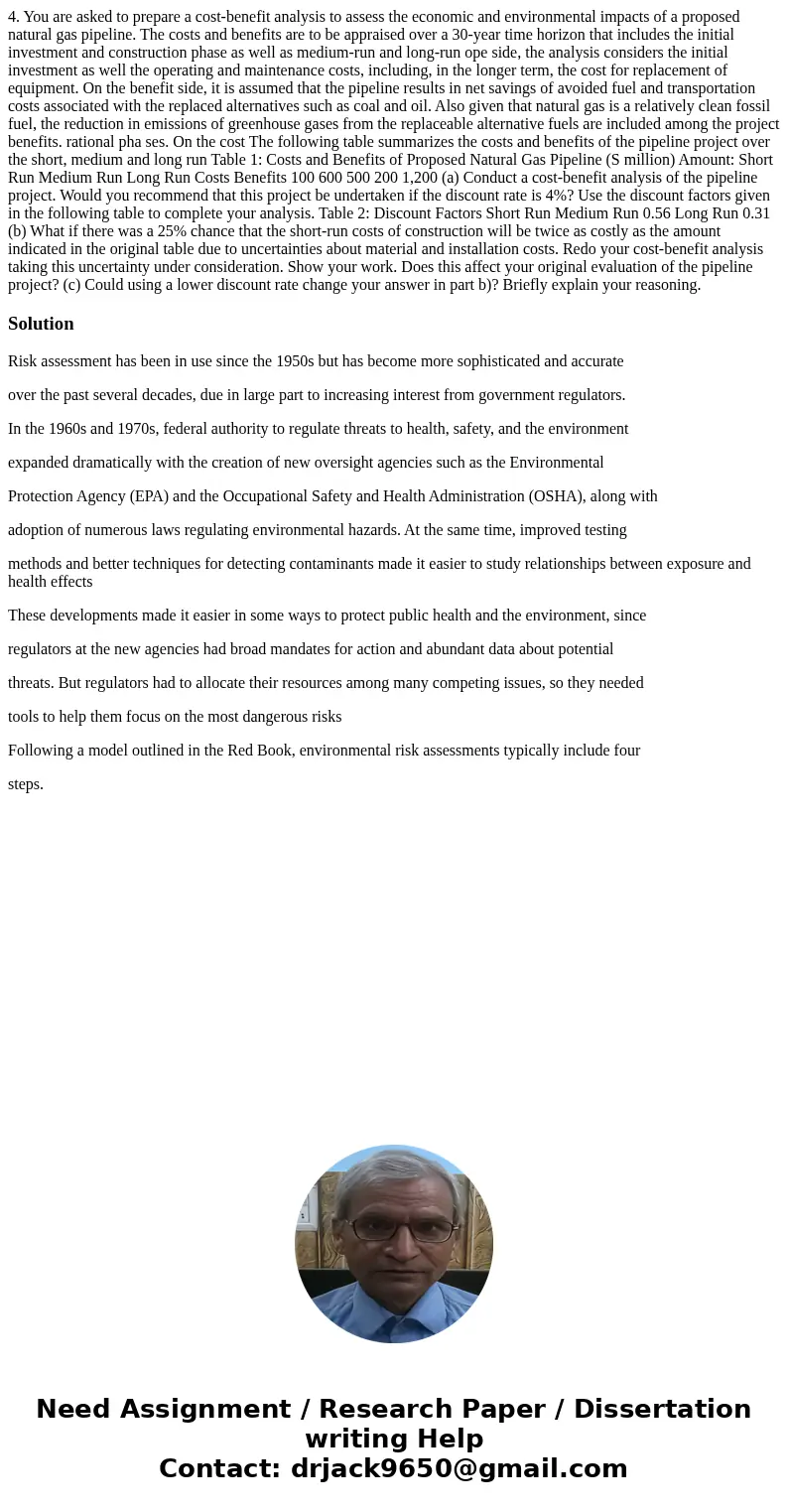4. You are asked to prepare a cost-benefit analysis to assess the economic and environmental impacts of a proposed natural gas pipeline. The costs and benefits are to be appraised over a 30-year time horizon that includes the initial investment and construction phase as well as medium-run and long-run ope side, the analysis considers the initial investment as well the operating and maintenance costs, including, in the longer term, the cost for replacement of equipment. On the benefit side, it is assumed that the pipeline results in net savings of avoided fuel and transportation costs associated with the replaced alternatives such as coal and oil. Also given that natural gas is a relatively clean fossil fuel, the reduction in emissions of greenhouse gases from the replaceable alternative fuels are included among the project benefits. rational pha ses. On the cost The following table summarizes the costs and benefits of the pipeline project over the short, medium and long run Table 1: Costs and Benefits of Proposed Natural Gas Pipeline (S million) Amount: Short Run Medium Run Long Run Costs Benefits 100 600 500 200 1,200 (a) Conduct a cost-benefit analysis of the pipeline project. Would you recommend that this project be undertaken if the discount rate is 4%? Use the discount factors given in the following table to complete your analysis. Table 2: Discount Factors Short Run Medium Run 0.56 Long Run 0.31 (b) What if there was a 25% chance that the short-run costs of construction will be twice as costly as the amount indicated in the original table due to uncertainties about material and installation costs. Redo your cost-benefit analysis taking this uncertainty under consideration. Show your work. Does this affect your original evaluation of the pipeline project? (c) Could using a lower discount rate change your answer in part b)? Briefly explain your reasoning.
Risk assessment has been in use since the 1950s but has become more sophisticated and accurate
over the past several decades, due in large part to increasing interest from government regulators.
In the 1960s and 1970s, federal authority to regulate threats to health, safety, and the environment
expanded dramatically with the creation of new oversight agencies such as the Environmental
Protection Agency (EPA) and the Occupational Safety and Health Administration (OSHA), along with
adoption of numerous laws regulating environmental hazards. At the same time, improved testing
methods and better techniques for detecting contaminants made it easier to study relationships between exposure and health effects
These developments made it easier in some ways to protect public health and the environment, since
regulators at the new agencies had broad mandates for action and abundant data about potential
threats. But regulators had to allocate their resources among many competing issues, so they needed
tools to help them focus on the most dangerous risks
Following a model outlined in the Red Book, environmental risk assessments typically include four
steps.

 Homework Sourse
Homework Sourse